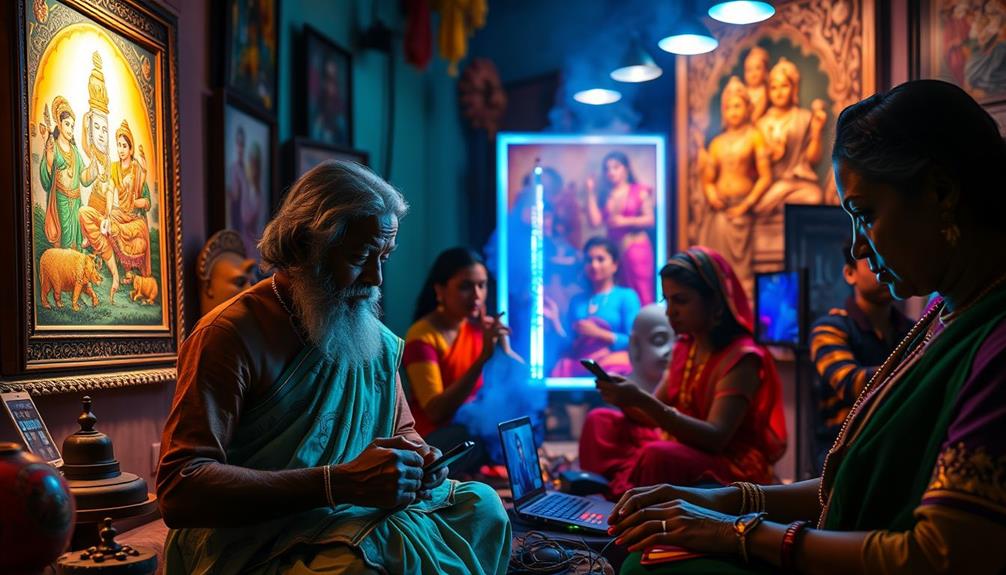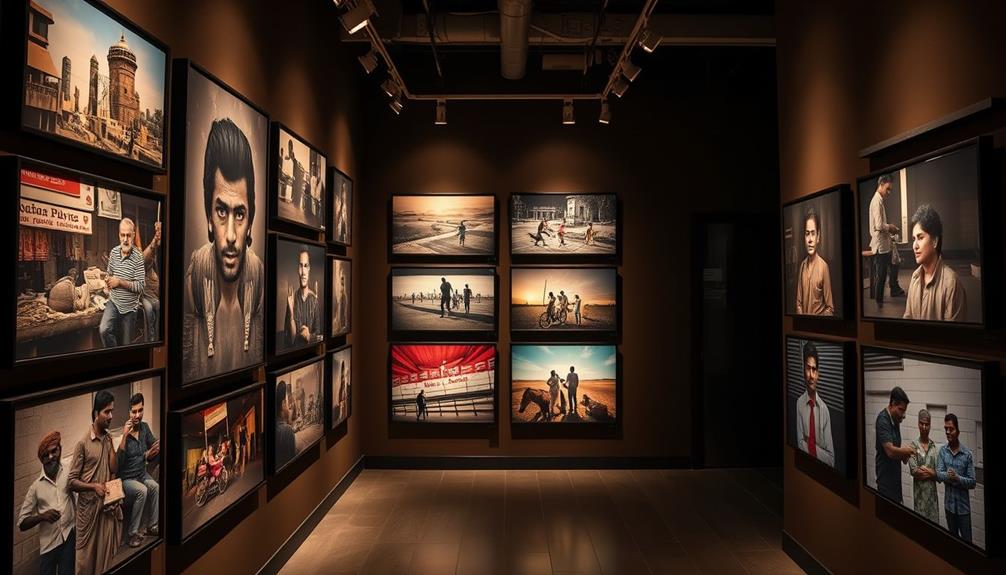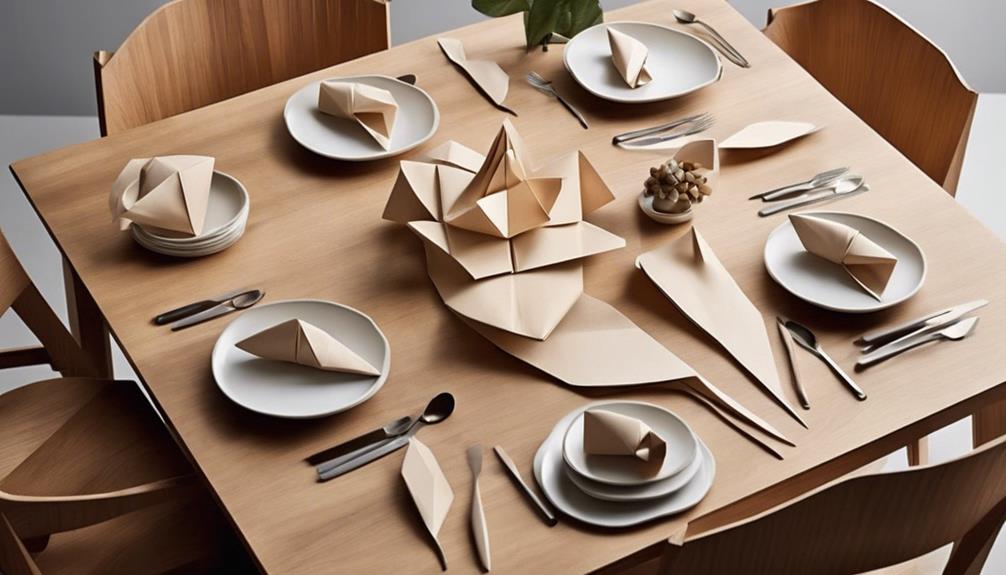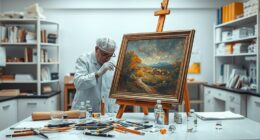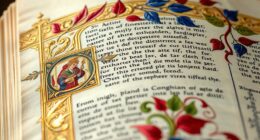Digital technology's reshaping Indian art creation and curation in exciting ways. You can explore diverse tools that foster creativity and experimentation. Artists from various backgrounds now showcase their work, breaking down traditional barriers. New art forms like AI-generated pieces and immersive experiences invite you to engage in unique ways. Social media connects you with a global community, enhancing art accessibility. As the relationship between human creativity and AI evolves, questions about authorship and ownership arise. The landscape is dynamic, and there's much more to discover about this fascinating intersection of technology and art.
Key Takeaways
- Digital technology democratizes art creation in India, allowing diverse artists to showcase their work and explore innovative techniques.
- New art forms, including AI-generated and immersive experiences, engage audiences and reflect contemporary societal dynamics.
- Social media enhances art consumption and education, making resources and community engagement more accessible to aspiring artists.
- Collaborations between human artists and AI challenge traditional concepts of authorship and ownership in the art world.
- Evolving legal frameworks are needed to address the complexities of AI-generated art and ensure fair compensation for all creators.
Transformation of Artistic Creation
Digital technology has fundamentally transformed artistic creation, opening up a world of possibilities for artists. You can now explore digital art in ways that were unimaginable in the past. With a variety of digital tools at your disposal, you're empowered to experiment with diverse techniques and mediums, enriching the art landscape with your unique voice.
This transformation of artistic creation doesn't just stop at tools; it democratizes the art-making process. Easier access to digital platforms means artists from all backgrounds can showcase their work, breaking down barriers that once limited expression. Furthermore, contemporary art trends, like those seen in Mumbai's artistic landscape, illustrate how innovation and tradition can coexist, inspiring a new wave of creativity.
Collaboration has also become more fluid, allowing you to partner with other creatives across disciplines, leading to innovative hybrid art forms. Additionally, the rise of AI in art presents unprecedented avenues for experimentation. You can integrate machine-generated elements into your creations, pushing the boundaries of what art can be.
Digital technology extends beyond traditional art forms, enabling interactive and immersive experiences that challenge conventional definitions. As you embrace these changes, you'll find that your artistic journey is no longer confined to the past but is a vibrant exploration of the future.
Experience and Consumption of Art
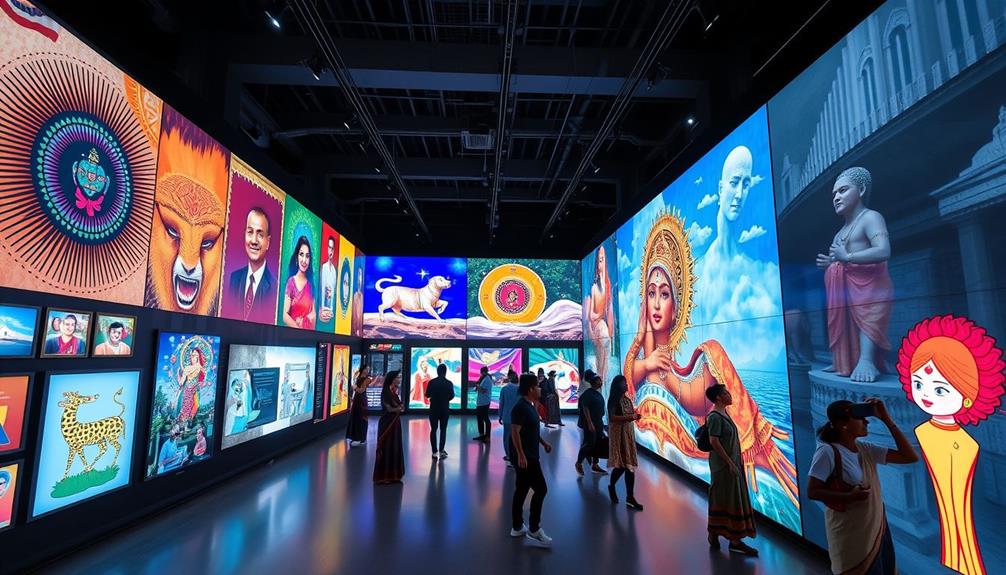
Art consumption has evolved dramatically, allowing you to experience artworks in ways that were once unimaginable. With the rise of digital media and social media, you can now explore art from around the globe, discovering diverse cultures and backgrounds without leaving your home.
Additionally, the incorporation of sensory experiences, such as those found in aromatherapy techniques, can further enhance your appreciation of art, providing a multi-dimensional approach to experiencing creativity.
Here are some key ways your experience of art has changed:
- High-Resolution Viewing: You can examine intricate details of artworks in stunning clarity, giving you a deeper appreciation of the artist's technique.
- Interactive Experiences: Augmented reality apps let you engage with art in dynamic ways, transforming passive viewing into active participation.
- Digital Installations: Virtual exhibitions create immersive environments where you can explore art in a participatory manner, making every visit unique.
- Social Media Sharing: Instantly share your thoughts on artworks and connect with other art enthusiasts, fostering a vibrant, interactive community around your shared passions.
These advancements not only enrich your experience but also redefine how art is consumed in today's digital era, bridging gaps and making art more accessible than ever before.
Emergence of New Art Forms
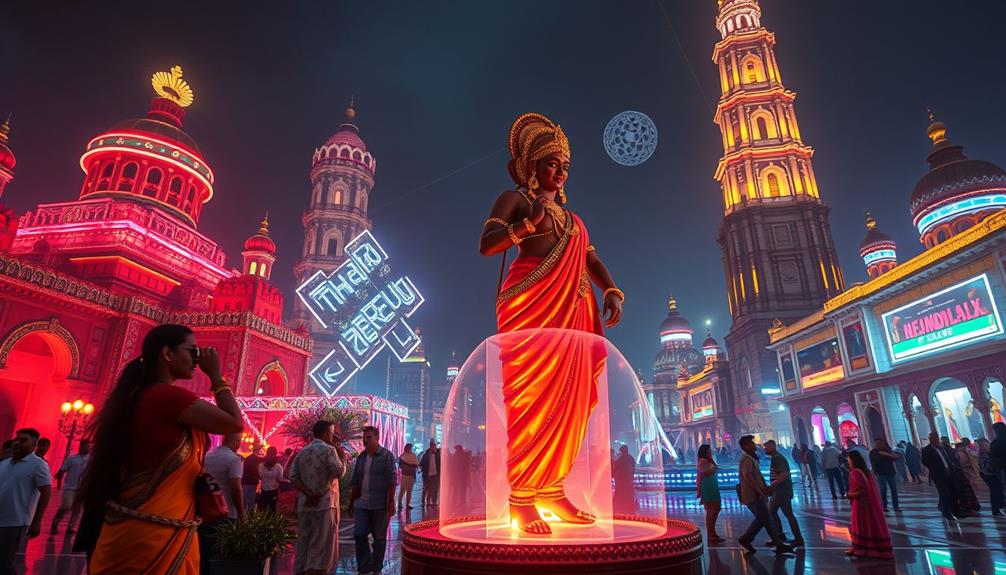
As you explore the evolving landscape of creativity, you'll notice the emergence of new art forms that challenge traditional definitions. In the digital age, video games and virtual reality have gained recognition as legitimate artistic mediums, expanding the boundaries of what art can be.
These platforms allow artists to create immersive experiences that engage you in ways traditional art forms cannot, similar to how AI in Cybersecurity enhances user experience through innovative technologies. AI-generated art is also gaining prominence, with tools like Midjourney showcasing machine-generated pieces that spark conversations around creativity and authorship.
This innovation reflects a significant shift in how art is conceptualized and produced, blending technology with human creativity. Artists today are increasingly incorporating generative AI into their workflows, resulting in hybrid artworks that fuse human intuition with algorithmic innovation.
As you navigate this new terrain, you'll see the development of genres that sit at the intersection of technology and creativity. These new art forms not only challenge your understanding of art but also invite you to engage with the creative process in an entirely different way.
Embracing these changes, you'll find a richer, more diverse artistic landscape that reflects contemporary society's dynamic nature.
Future of AI in Art
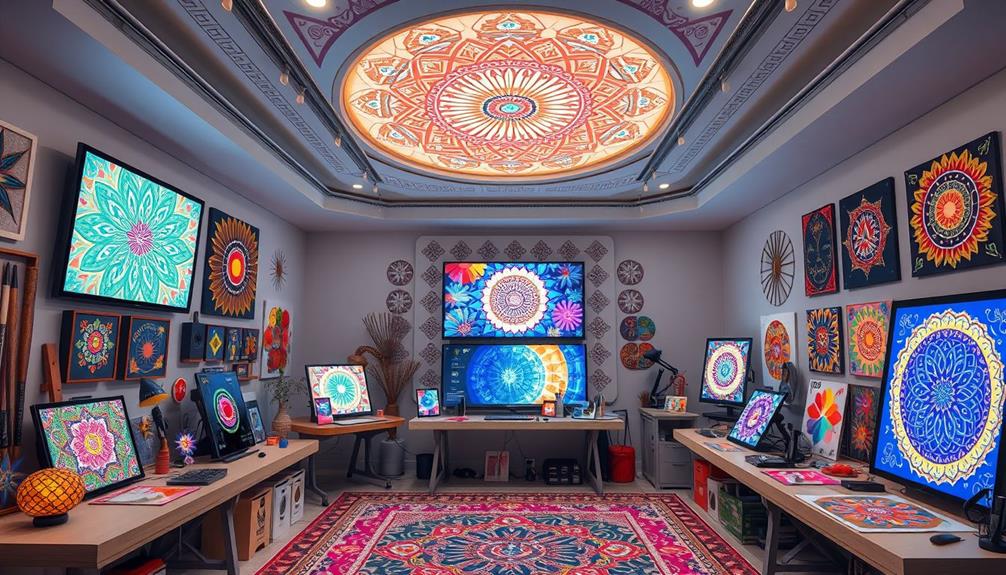
As AI continues to evolve, you'll notice more artists collaborating with these intelligent systems, creating hybrid artworks that merge human creativity and machine output.
This integration of technology into art creation fosters new forms of expression and challenges traditional artistic processes, much like the way AI-generated music raises questions about ownership and copyright.
This shift raises important questions about ownership and authorship, as traditional definitions of creativity become blurred.
You'll find yourself considering the implications of AI's role in art and how it challenges our understanding of what it means to be an artist.
Evolving Artistic Collaborations
In the dynamic landscape of contemporary creativity, collaborations between artists and AI systems are reshaping the way we conceive and produce art. As seen in the phenomenon of sonoluminescence secrets, these evolving artistic collaborations are pushing the boundaries of traditional art forms, leading to innovative works that blend human creativity with machine-generated ideas.
As a human artist, you can harness AI's capabilities to expand your creative horizons.
Here are some key benefits of partnering with AI:
- Inspiration: AI can suggest new styles and techniques, helping you explore uncharted artistic territories.
- Complexity: With advancements in AI technology, you can create increasingly intricate pieces that challenge conventional norms.
- Hybrid Art: The emergence of hybrid art pieces allows for a fusion of human artistic elements and AI-generated components, creating a fresh genre.
- Enhanced Creativity: By integrating AI into your process, you can enrich your artistic practice and generate ideas you mightn't have considered.
Ultimately, these collaborations not only enhance your art-making process but also raise intriguing questions about authorship and the future of creativity in the digital age.
Redefining Ownership Models
The emergence of AI-generated art is challenging traditional concepts of ownership and authorship in the creative domain. As you explore the world of AI tools, you'll notice that existing copyright laws often fall short when addressing the complexities surrounding machine-generated creations. This gap has sparked discussions about new ownership models that can adapt to the unique nature of AI collaborations, similar to the ways in which avoiding gold IRA scams requires a careful examination of credibility and transparency.
Artists working alongside AI systems may find themselves grappling with authorship issues, as determining rights over the resulting artworks can lead to disputes. To mitigate these challenges, there's a growing interest in decentralized ownership frameworks like blockchain technology. Such systems can provide transparent attribution and provenance, ensuring that both artists and AI contributions are acknowledged.
In this evolving landscape, new licensing agreements may emerge, allowing artists to retain specific rights while recognizing the role of AI in their work. This ongoing debate emphasizes the urgent need for updated legal frameworks that balance human creativity with AI capabilities, ultimately ensuring fair compensation and recognition for all parties involved.
As you navigate this shift, consider how these changes might reshape your understanding of ownership in art.
Authorship and Creativity Challenges
Artificial intelligence is revolutionizing the art world, but it's also stirring up significant challenges around authorship and creativity. As AI systems generate artworks autonomously, traditional notions of creativity and originality are being questioned.
This shift is similar to the evolving landscape of AI Ethicist Jobs, where the moral implications of technology are increasingly scrutinized. Here are some key challenges you should consider:
- Authorship Attribution: Who gets credit when an AI creates art? This question complicates the concept of a single creator.
- Collaboration Dynamics: The rise of hybrid works—where human artists collaborate with AI—blurs the lines between human and machine creativity.
- Ownership Rights: New ownership models are emerging, but determining rights for machine-generated content remains complex and unresolved.
- Emotional Authenticity: Despite AI's capabilities, the emotional and subjective experiences of human artists are irreplaceable, raising concerns about the authenticity of AI-generated works.
As you navigate this evolving landscape, it's vital to recognize how AI is reshaping the definitions of authorship and creativity in art.
Balancing these innovations with the unique qualities of human expression will be significant for the future of artistic endeavors.
Human Creativity Vs. AI
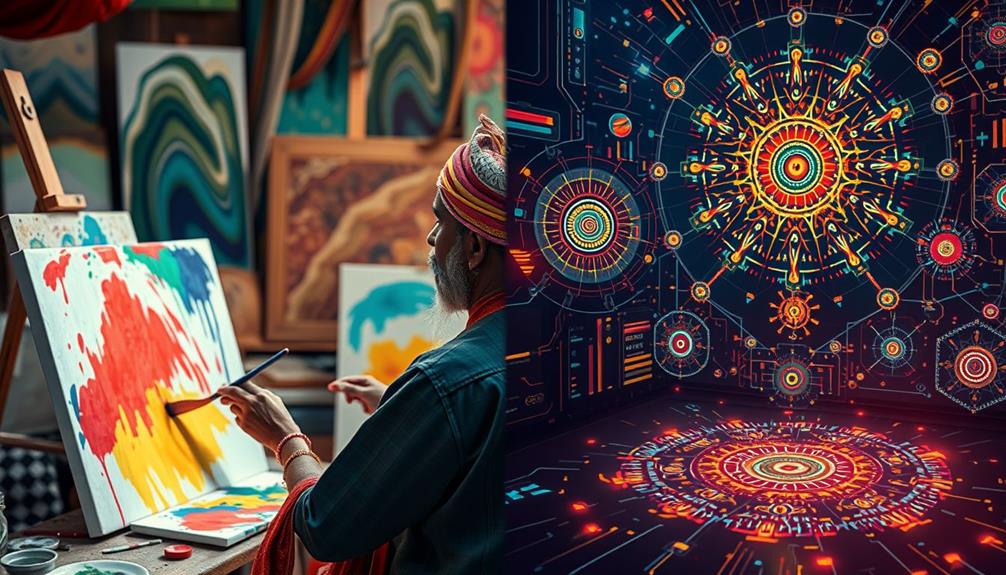
Amid the rise of AI-generated art, a vibrant debate emerges around the essence of human creativity. While artificial intelligence can churn out impressive visuals and mimic styles, it lacks the emotional depth and subjective experiences that you, as a human artist, infuse into your work. Your unique perspective is indispensable for originality, something AI simply can't replicate.
Moreover, the dynamics of human relationships, including the emotional connections and empathy involved in artistic expression, are aspects that AI can't authentically emulate. This lack of empathy and connection highlights the intrinsic value of human creativity in art.
As artists increasingly collaborate with AI systems, we're likely to see hybrid art pieces that blend your creativity with technological innovation. AI tools can assist you in exploring diverse styles and techniques, pushing the boundaries of traditional art forms.
However, even with these advancements, your artistic vision remains essential. The creative process is deeply personal and shaped by individual experiences and cultural contexts that AI just doesn't possess.
The emergence of AI in the art world challenges conventional definitions of creativity, raising important questions about authorship. As you navigate this digital landscape, it's critical to assert the unique contributions that only human artists can provide.
While AI can enhance your practice, it can't replace the core essence of what it means to create art as a human being.
Market Opportunities in Art Education
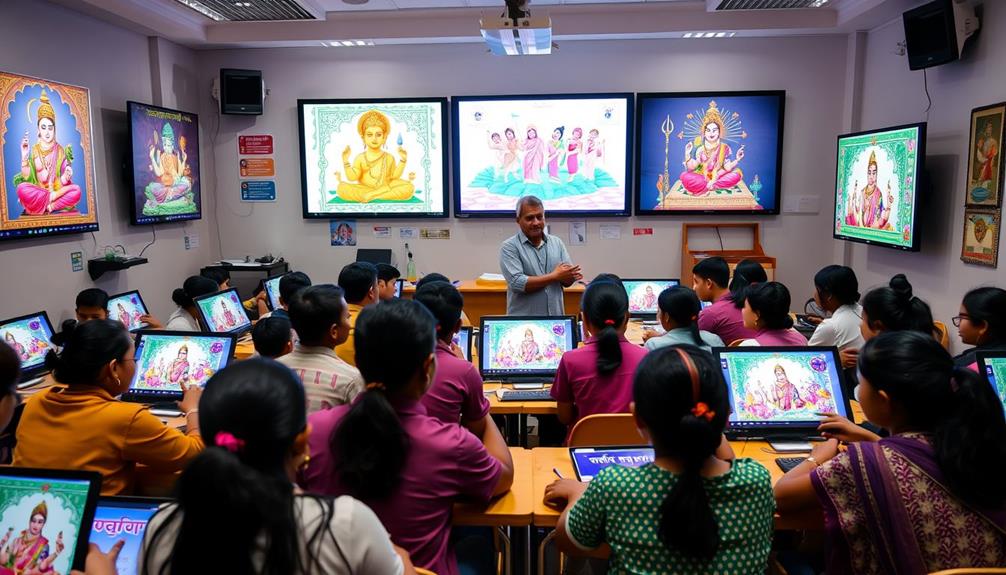
You might be surprised to learn that 85% of Indian consumers are turning to art platforms to boost their artistic skills and knowledge, showing a clear demand for accessible art education.
The rise of digital technology has revolutionized the way art is created and shared, leading to a surge in online communities that foster collaboration and learning.
With social media as the go-to source for learning, it's essential to identify credible resources that can meet this need, especially those that emphasize vintage furniture and soft textiles in their teaching methods.
However, high costs and a lack of hands-on experiences still pose significant barriers for many enthusiastic learners.
Demand for Accessible Education
The demand for accessible art education in India has surged, with 85% of consumers turning to art platforms to refine their artistic tastes and skills. This trend reflects a growing need for structured learning opportunities in the field of art in India.
You might be surprised to know that the primary demographic for these educational resources includes women aged 25-39 from Tier 1 and Tier 2 cities, often with backgrounds in creative, business, or marketing sectors. Engaging in art not only enhances cognitive development but also fosters creativity and imagination in individuals, similar to the benefits seen in healthy play activities for children.
Here are four key factors driving this demand:
- Digital Access: With 88% of participants relying on social media for art learning, digital technology is vital in making education accessible.
- Quality Content: High investment requirements for quality art content create barriers, highlighting the need for more affordable educational options.
- Experiential Learning: The lack of physical connection with art limits hands-on experiences, emphasizing the importance of interactive digital platforms.
- Credible Resources: There's a pressing need for trustworthy online resources to guide learners through their artistic journeys.
Addressing these factors will certainly enhance the landscape of accessible art education in India.
Role of Social Media
As social media continues to shape our lives, it plays an indispensable role in transforming art education in India. With 88% of survey participants using social media as their primary source for art learning, it's clear that these platforms are becoming crucial for accessible art education. This shift opens up new market opportunities, especially for women aged 25-39 from Tier 1 and Tier 2 cities, who are enthusiastic to enhance their artistic skills.
However, the vast amount of unstructured information online can be overwhelming. Here's a quick look at how social media influences art education:
| Benefits | Challenges |
|---|---|
| Easy access to art resources | Overwhelming amount of information |
| Community engagement | Lack of credible sources |
| Cost-effective learning options | High investment in quality content |
Barriers to Quality Learning
Maneuvering the world of art education in India can feel intimidating, especially with the myriad of barriers that learners face. You might find yourself grappling with several challenges that hinder your artistic journey:
- High Investment Requirements: Quality content often comes at a steep price, making it difficult for many to access valuable resources.
- Generic Curation Practices: Frustration arises from biased and one-size-fits-all approaches that fail to address individual learning needs.
- Overwhelming Information: The internet's abundance of unstructured information complicates your navigation through art education, leaving you feeling lost.
- Lack of Experiential Learning: The absence of physical engagement with art limits your understanding, emphasizing the need for innovative solutions.
To overcome these barriers for potential learners like you, there's a growing demand for accessible art education.
Structured and interactive digital experiences can bridge the gap, providing tailored resources that enhance your learning.
Immersive Technologies in Education
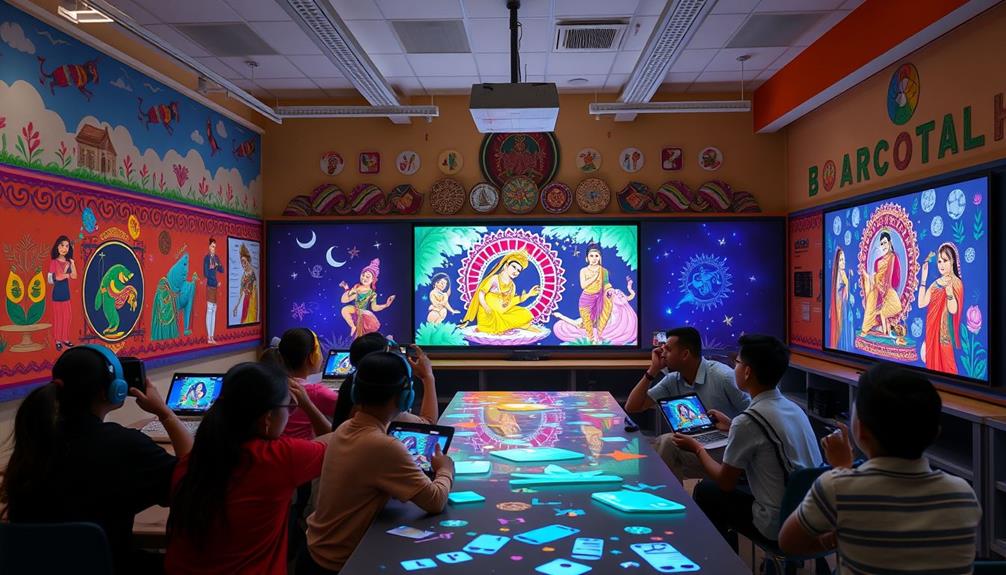
Immersive technologies like Augmented Reality (AR) and Virtual Reality (VR) are transforming art education by offering interactive experiences that engage students in ways traditional methods can't.
With these technologies, you can explore historical artworks in a dynamic context, animating pieces to gain a deeper understanding of their significance. For instance, platforms like Vortic provide virtual museum tours, allowing you to appreciate cultural artifacts from around the globe without ever leaving your home.
Google Arts & Culture's Art Selfie 2 exemplifies how generative AI fosters engagement by creating personalized interactions with art. This approach enhances your learning experience, making art education more relatable and enjoyable.
The Interactive Experience Model further emphasizes the importance of visitor engagement, turning passive observation into active participation.
As immersive technologies become increasingly user-friendly, they expand access to art education, inviting diverse learners to connect with artistic works in innovative ways.
By embracing these interactive experiences, you not only enrich your understanding of art but also foster a broader appreciation for culture.
Ultimately, these advancements are reshaping the landscape of art education, breaking down barriers and making learning more accessible and engaging.
Blockchain and NFT Trends
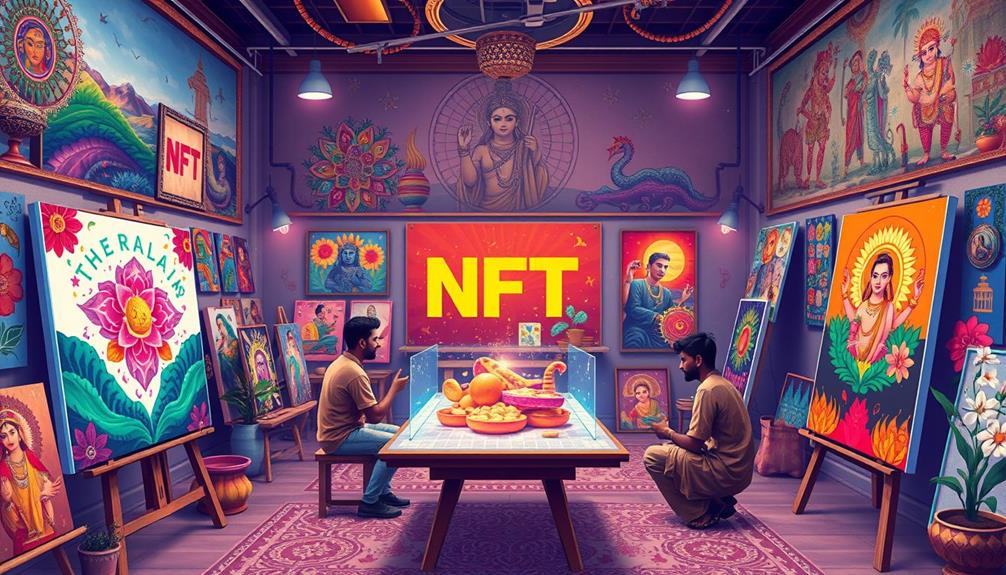
The rise of digital technologies in art education paves the way for exciting developments in the art market, particularly through blockchain and NFTs. These innovations are reshaping how you engage with and invest in art. Here are some key trends to reflect on:
- Secure Ownership: Blockchain technology provides secure and transparent records of artwork ownership, addressing authenticity issues that have historically plagued the market.
- Enhanced Art Provenance: Unique digital identities assigned to artworks on the blockchain detail the artist's history and ownership, greatly enhancing art provenance.
- Market Resilience: Despite a downturn in the digital art market in 2023, art-related NFTs still generated a staggering $1.2 billion in sales, showcasing continued interest in this evolving medium.
- Robust Online Sales: Online art sales reached $11.8 billion in 2023, reflecting a 7% increase from the previous year, indicating a strong market for digital art despite fluctuations in NFT popularity.
With the decentralized nature of blockchain ensuring an immutable transaction record, you can trust the authenticity and ownership history of your art investments more than ever.
Linguistic Accessibility in Art Platforms
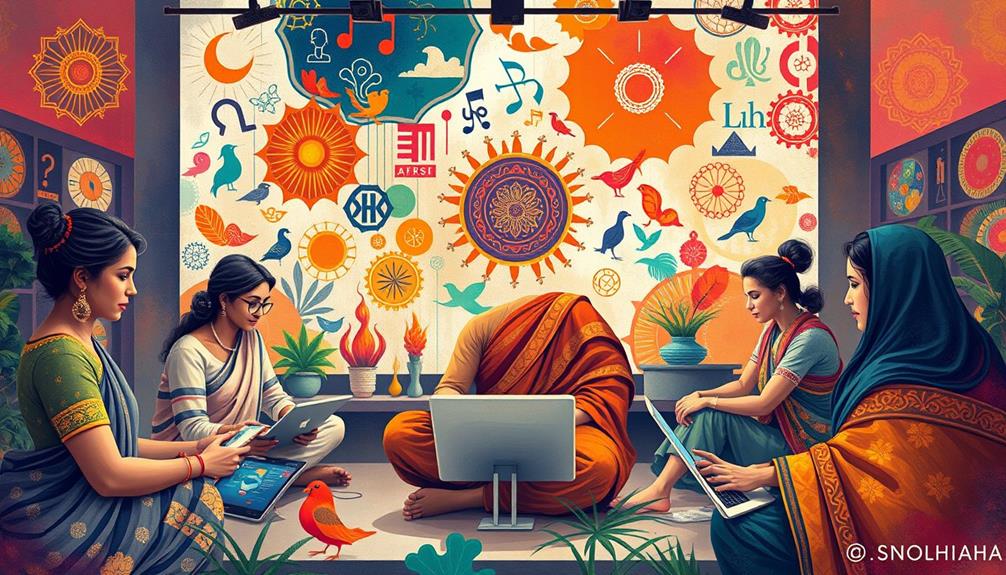
How can art platforms truly engage a diverse audience? By embracing linguistic diversity, you can create a more inclusive environment that fosters appreciation for art across various cultural backgrounds.
Digital platforms for art education should prioritize language accessibility, ensuring content is available in multiple languages. This approach not only enhances user engagement but also promotes a deeper understanding of artistic expressions.
Collaboration among art institutions can greatly improve the availability of culturally relevant content in diverse languages. This effort enriches the learning experience for various learner populations and encourages a broader dialogue within the global art community.
With internet user demographics shifting from 80% English dominance in 1996 to just 27.3% in 2010, it's clear that multilingual art platforms are essential for catering to a more diverse audience.
Frequently Asked Questions
What Is the Impact of Digital Technology on Art and Artists?
Digital technology's reshaping art and artists by expanding access to tools and platforms. You can experiment with new styles, engage audiences interactively, and learn through social media, transforming how you create, share, and appreciate art.
How Does Technology Affect Art and Creativity?
Isn't it fascinating how technology shapes art and creativity? You're empowered to explore new mediums, collaborate with AI, and engage audiences in immersive experiences, transforming your artistic journey while breaking traditional boundaries and enhancing accessibility.
How Does Digital Art Affect Traditional Art Forms?
Digital art blends seamlessly with traditional forms, allowing you to explore innovative techniques. It challenges you to rethink boundaries, encouraging experimentation and collaboration, ultimately enriching your artistic expression while broadening your audience's engagement with art.
Is the Digital Era Improving or Ruining the Experience of Art?
You might find the digital era enhances your art experience by providing access to diverse works and interactive engagement. However, the overwhelming amount of information can also confuse you, complicating your appreciation of art.
Conclusion
To summarize, digital technology is reshaping Indian art like a river carving a new path through ancient rocks. It enhances creation, broadens access, and introduces innovative forms that challenge traditional boundaries. As we embrace AI and immersive experiences, the future of art becomes more vibrant and inclusive. With emerging market opportunities and the rise of blockchain, you're witnessing a transformative era in art that invites everyone to explore, participate, and shape the narrative.
